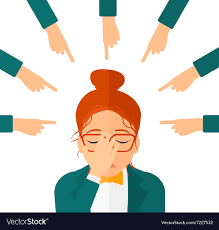 |
Edvard Grieg
(Doesn't he look like Mark Twain?) |
A pianist writes: "I was following with the score the Grieg concerto recently in a performance by Rubinstein. I was struck in the last movement by a particular scale passage written to be played in 2 beats, if taken literally. I was wondering what your opinion is of passages such as this one where many performers lengthen the time required to play all the notes and why some performers choose to do this. I've seen many such passages."
 |
|
I put that scale and others like it (Liszt E-flat concerto) in the cadenza catagory, meaning that it can be interpreted. Since the orchestra is tacet, it doesn't matter if the pianist takes a bit more time. Percy Grainger's suggestion is not a bad idea (upper version). Rubinstein's moderate tempo gives him more time for the scale. (No, it isn't about fingers.) Also, starting with the E, you can make a group of four thirty-seconds at the end of the previous bar, leaving only twenty for the rest of the scale, two groups of ten, which can be pulsed in various ways. It won't work if you throw yourself at twenty-two notes; the hand has to feel some rhythmic organization. Keep in mind that this is a romantic concerto with occasional flashes of virtuosity. This is the era of "effect;" there is no letter of the law in the Classical sense, rather more like the wild west. The exact meaning of notation becomes increasingly more open to interpretation in the 19th century and beyond. The notational demands of Beethoven begin to recede, although even Beethoven could at times make exceptions, as in Opr. 106 and 111. Free at last! The pianist responds: "This reminds me of another thing. I have for years been obsessed with Chopin's op. 10, no. 2. Badura-Skoda's edition of the etudes offers a few facilitations in the case of 10/2 and the Chopin International, which I understand is the recommended edition of the Chopin International Competition, even sanctions the elimination of notes in two places. Peter Orth, Ruth Slencynska, and Ian Hobson explicitly indicate their own facilitations in various etudes including 10/2. If luminaries such as these can openly do this why should us ordinary people feel guilty about it? Still one runs across those individuals who piously assert that 'cheating' defeats the purpose of the etude. "
It's not cheating if the music works. I hereby absolve you of all guilt. The audience doesn't care what fingering you use or how youredistribute the notes between the hands or even (shudder) omit a small detail in order to increase facility or accommodate your hands in order to play another day. For all of those on the cheating committee I say that the purpose of a concert etude is to give a musical experience to the listener. It is not a vehicle for displaying how hard you've worked. An etude with slight inaudible adjustments is just as exciting. For those who insist on feats of derring-do, I suggest they go to the circus. Here's some food for thought: Why not play Ravel's left-hand concerto with two hands, if you have them? Would that be considered a transcription? Is left-hand piano a thing? No one would dare play the left-hand repertoire with two hands, and yet I hear the nagging question "why not"? Those pieces were written for a one-armed pianist. I have two. If it's really just about the music, then... (Maybe it sounds quite different when one hand tries to make up for two.) Just food for thought.





